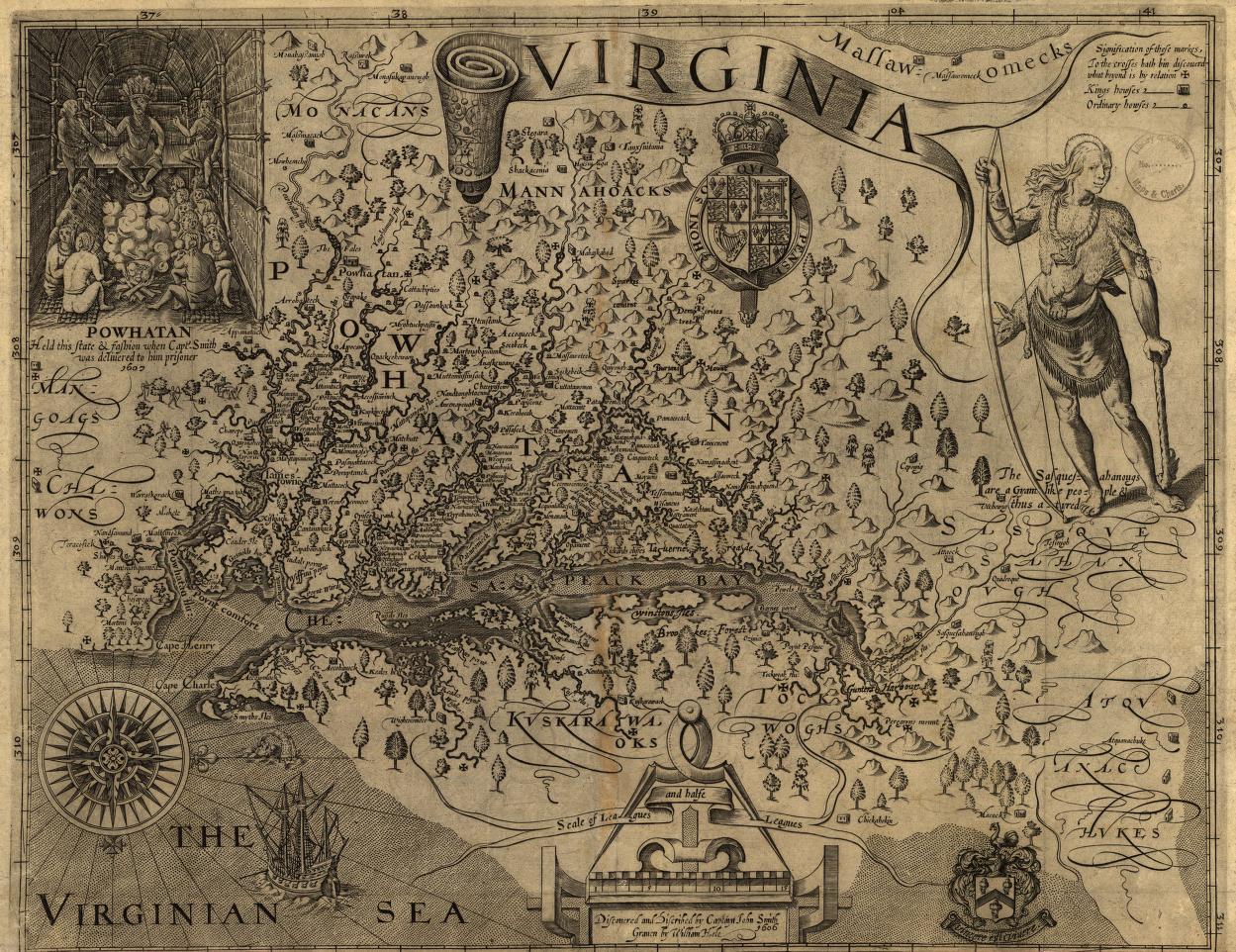Only by luck and happenstance did Britain’s first permanent settlement in the New World survive
-
Winter 2010
Volume59Issue4

Arriving at the English colony of Jamestown in late May 1610, Sir Thomas Gates was appalled by what he discovered. The fort’s palisades had been torn down, the church ruined, and empty houses “rent up and burnt.” Only 60 or so colonists remained alive of the more than 200 who had crowded into the fort the previous fall, and these were “Lamentable to behold.” Those able to raise themselves from their beds to meet Gates and his men “Looked Like Anatomies” [skeletons]. They cried out, “We are starved We are starved.” Yet Gates could do little to relieve them.
Jamestown, established in May 1607, had not prospered. By the end of 1608 a combination of dissension among the colony’s leaders, Indian attacks, and food shortages had left it in true disarray. Hearing this, its sponsor, the Virginia Company of London, decided to put the colony on a completely new footing and launched a national appeal for support. Securing Virginia, the company argued, was the first step by which the English could take possession of North America, bring Protestantism to the Indians, and produce valuable commodities for sale at home and abroad.
In June 1609 a fleet commanded by Gates had set out from Plymouth, England, carrying 500 settlers, food, arms, and equipment to Jamestown, only to meet with disaster on July 24—St. James’s Day—when a mighty hurricane burst upon the fleet little more than a week from its destination and scattered it upon the winds. Gates and most of the colony’s leaders were aboard the flagship Sea Venture, which was wrecked upon the reefs surrounding Bermuda. One hundred fifty passengers scrambled ashore, thankful for their miraculous salvation, but had to spend nearly 10 months on the island before they were able to complete the construction of two small ships, the Deliverance and the Patience, and make their way to their original objective.

While Gates and his men rebuilt their boats, a number of events conspired to make Jamestown’s existence even more perilous. In mid-July 1610 a small Spanish ship sent to reconnoiter from the garrison at St. Augustine, Florida, entered the Chesapeake Bay. While the ship got no farther than the mouth of the James River before being turned back by a larger English vessel, the Spanish now knew where the English were settled. It could only be a matter of time, the English feared, before a Spanish fleet was dispatched against them from bases in the West Indies.
Later that fall the Powhatan Indians launched a full-scale war against them. Hundreds of English were killed along the James River Valley. Jamestown was besieged for six months. The colony disintegrated.
Horrified at the suffering of the colonists he found, Gates decided there was no option but to abandon the colony. His own provisions were running out, and there was no hope of getting any food from the Powhatan or any means of taking fish from the rivers in sufficient quantities to sustain the colony. To the great joy of the ragged survivors, who wanted nothing more than to return to England, he announced his decision to abandon Jamestown. Discharging a salute of small shot by way of farewell, the colonists embarked at midday on June 7, 1610, heading for the mouth of the Chesapeake Bay and the Atlantic. Seemingly, the Jamestown colony was at an end.
But an extraordinary reversal awaited them. The departing flotilla had barely dropped a dozen miles downriver before, as they were waiting for the tide to turn, they espied a boat making its way upriver. It proved to be an advance party of a relief expedition led by the colony’s new governor, Lord De La Warr, which had just entered the bay with three ships and 150 colonists. To the utter dismay of Gates’s men, who must have wished that they had burnt their fort down before leaving, Gates was ordered to return to Jamestown forthwith. From collapse and abandonment, the colony now passed to some 375 settlers and a renewed leadership, all adequately provisioned.
De La Warr’s timely arrival did not bring about an immediate improvement in the colony’s fortunes, however. The next four years would still be hard going, as the Virginia Company strove to raise resources for the venture and the colonists struggled to extend their settlements in the face of fierce resistance from the Powhatan. But never again would the colony come so close to being abandoned.
In the long term, the survival of Jamestown profoundly influenced the future of America. From its uncertain beginnings, Virginia emerged as the richest and most populous of the British mainland colonies, the first transatlantic site of an empire that would carry English language, laws, institutions, and the Protestant Church across the globe. Representative government, established at Jamestown in 1619, would blossom into a vibrant political culture and spread throughout the British colonies, leading in time to a new republican faith that would find its fulfillment in the founding of the United States.

